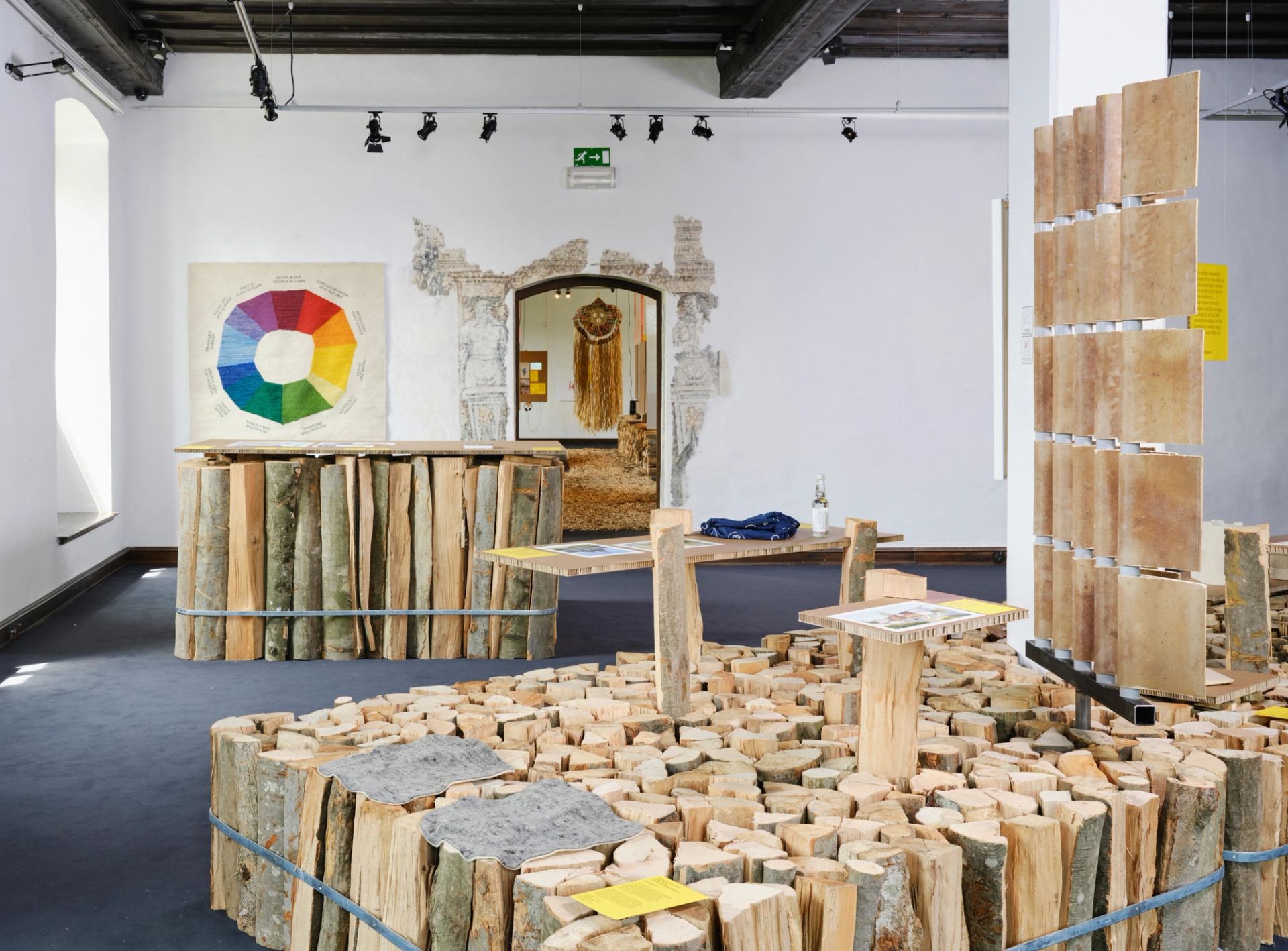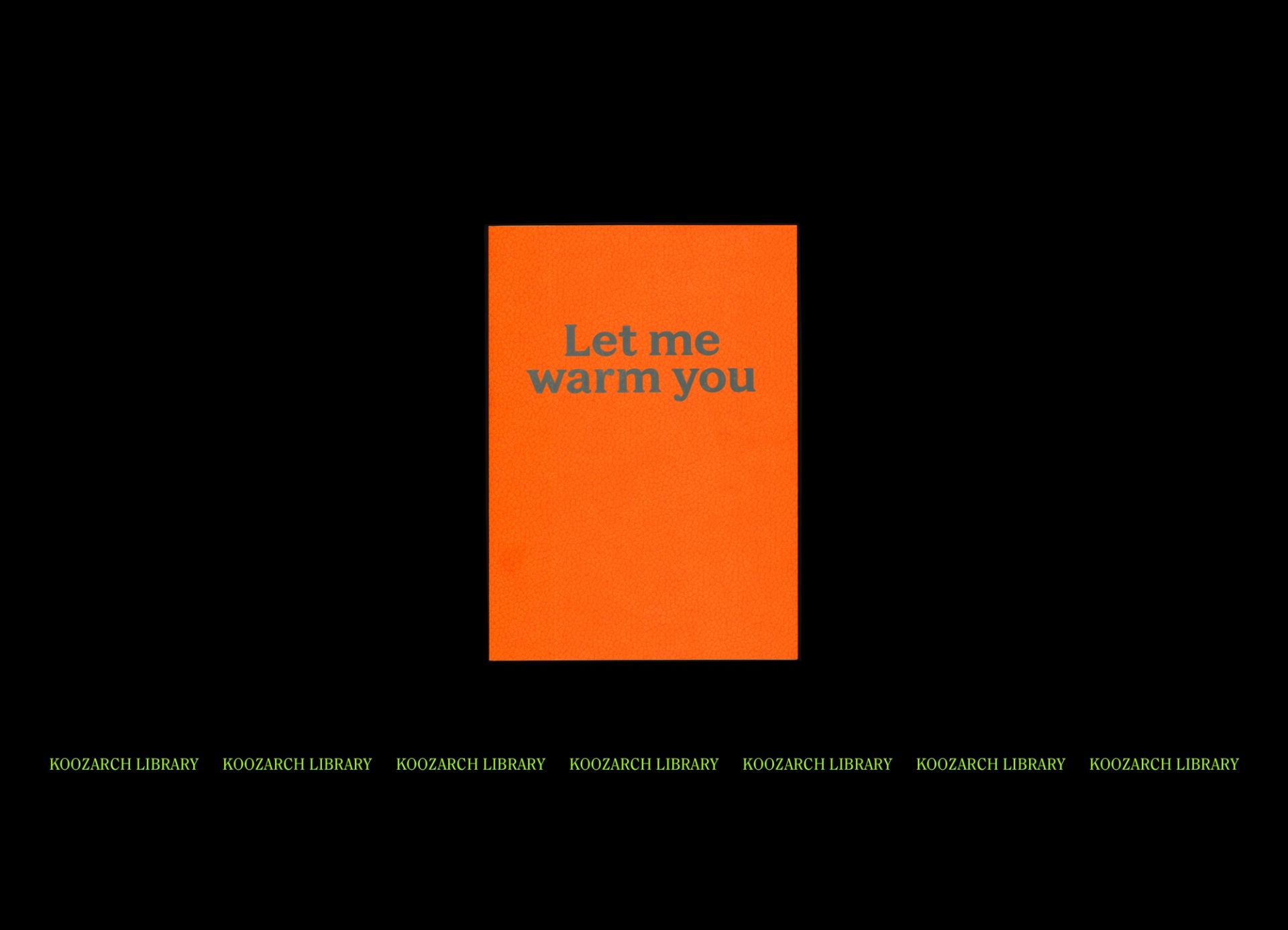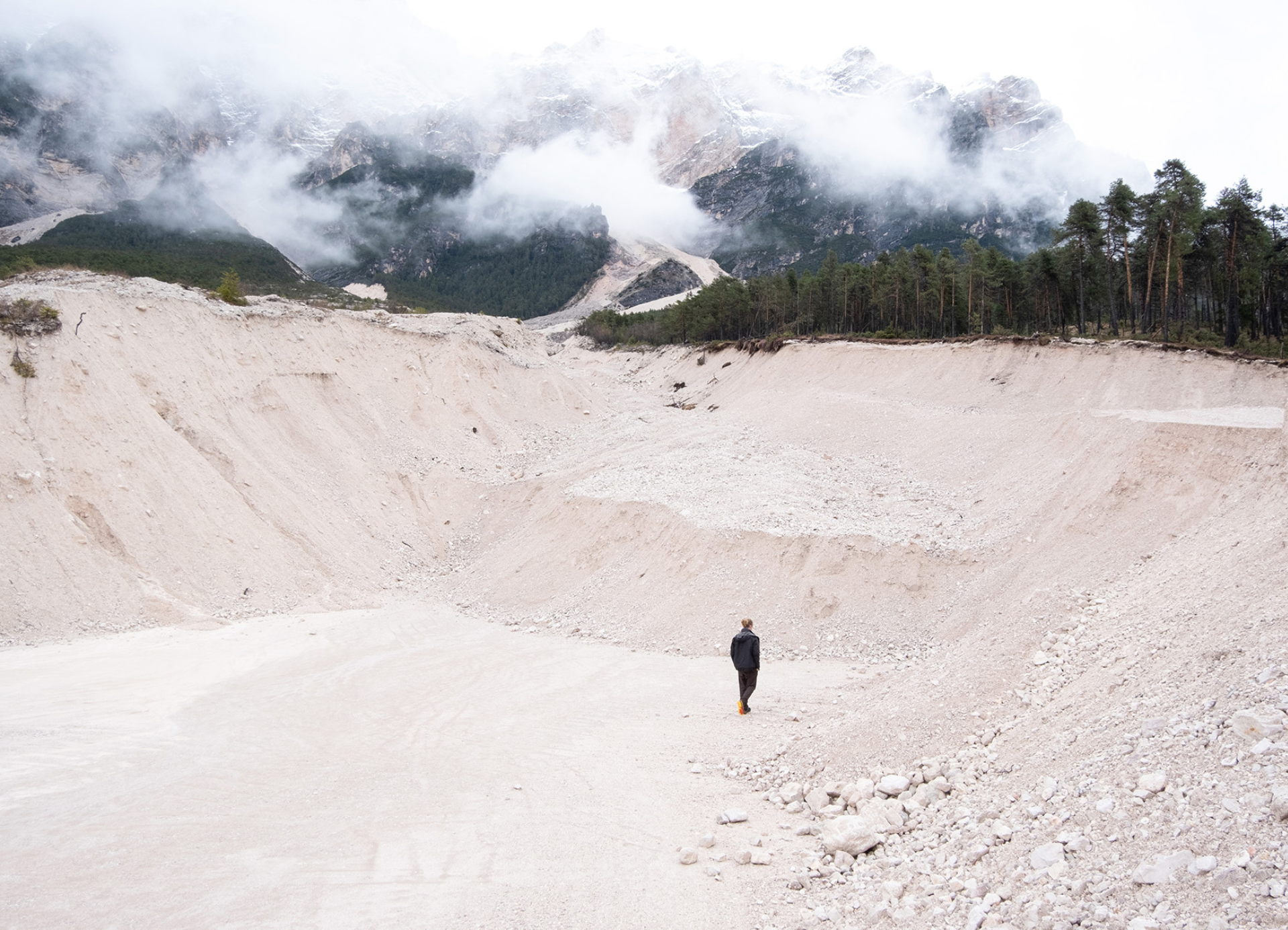What is the environmental footprint of our contemporary cultural production? This is the question which the Futuring team has been addressing through their environmental audit of the 27th Ljubljana Design Biennale. Dabbling in the "field of using a systematic process for thinking about and planning for the future; picturing possible outcomes", in this interview with Žan, Tamara and Barbara we discussed the premises behind this pioneering project and the ambitions of the team for this toolkit as an open ended document upon which designers and cultural institutions alike should continue to build upon.

KOOZ Can you introduce us to Futuring and what brought you to investigate and research sustainable practices within cultural production?
FUTURING TEAM The Futuring Toolkit team met years ago at the Academy of Fine Arts and Design at the University of Ljubljana, where Barbara was both teacher and mentor, and we (Žan and Tamara) were her students. Thanks to Barbara’s enthusiasm for design research, we ourselves became engaged in the practice of social design, and regenerative design. Within this framework, we saw BIO27 asa great opportunity to start working together as colleagues and as a team. Futuring is the field of using a systematic process for thinking about and planning for the future; to picture possible outcomes, or as Tony Fry explained, “Design Futuring argues that responding to ethical, political, social and ecological concerns requires a new type of practice which recognizes design's importance in overcoming a world made unsustainable.” We are Futuring.
KOOZ The research starts with the “Goldsmiths Plan 2025”. Could you tell us a bit more about this case study and how it informed your undertaking?
FT The Goldsmiths Plan 2025 was one of the first examples we looked into at the very beginning of our research. The profound analysis, on the one hand, and the incredibly clear step-by-step guide, on the other, showed us that even complex challenges such as the sustainable transition for such a renowned institution could be manageable if dealt with properly. Most importantly, the Goldsmiths case study is a success story as they managed to stick to the plan and successfully implement the first batch of measurements with great results, proving that the net-zero goal is indeed achievable. This very much encouraged us to dive deep into our research and try to come up with an output which could be of use in trying to reduce design’s environmental footprint.
If not cultural institutions, who will and can lead the way?
KOOZ For this edition of Bio27, Studio Medprostor searched for alternative ways of building up the exhibition with a design which detached itself from the canonical white cube typology to engage with local materials and traditions. How and to what extent do you see this as “good” exhibition practice?
FT The exhibition designed by Studio Medprostor, for this edition of Bio27, successfully proves that exhibitions can, in fact, be built differently without waste by prioritizing the borrowing of material/s as, for example, the firewood which will be returned to the supplier to be sold after the biennial. In comparison to conventional exhibition designs, this method radically reduces the impact of the exhibition setup and, to be more precise, in comparison to BIO26 (where virgin aluminium was used for the construction of the display tables), this year the CO2 emissions of the exhibition construction materials, were brought down by 7.4 tonnes. In other words, this means 4.7 times less CO2 emissions than at the previous biennial. Of course, there are always pros and cons to all approaches and in this specific scenario, the weight of the firewood meant more manual labor needed to assemble the installation and an emission-intensive transport. However, the medium is also the message, and we believe that the overall effect created by the stacking of the firewood within the museum space was quite impressive and very informative. In addition to serving as an exhibition device, the firewood also speaks about the abundance of this local material, which is too often used solely as an energy source rather than exploring alternative uses and ideas. To date, there is still a lot of room for improvement in how we take care of the forests and how we make use of this precious material in Slovenia.

Bio27 Super Vernaculars, exhibition view.
KOOZ How does the research explore the role that museums and spaces for cultural production should and could play in our global ambition to reach the Sustainable Development Goals and net-zero objectives?
FT Cultural institutions can implement and facilitate sustainable development on multiple levels. In the most direct way, they can manage their own production by starting to measure the impacts of their current operations, understanding opportunities for improvement, and finally implementing the necessary measures to change from resource-intensive to sustainable or even regenerative production. The magnitude of the environmental impact that cultural institutions have in the world is, of course, relative and negligible in comparison to the impacts of, let's say, heavy industries, yet we strongly believe that change must occur on numerous fronts for a difference to be made. If not cultural institutions, who will and can lead the way?
Thisbrings us to the next level of influence as cultural institutions are frequentlyinvolved in numerous supply chains, which they can, to some degree, influence. For example, the public procurement process could force suppliers to switch to renewable resources and provide sustainable products and/or services. Slowly but surely, if the majority of institutions would start putting pressure on suppliers, this would lead to major shifts in the industry.
As educational institutions, museums could play a pivotal role in raising awareness around issues and challenges relating to the climate crisis in a much more tangible and intriguing way, better than any media.
Last but not least, as educational institutions, museums could play a pivotal role in raising awareness around issues and challenges relating to the climate crisis in a much more tangible and intriguing way, better than any media. Through such educational experiences, museums and other cultural institutions have the capacity to cultivate beneficial values and virtues in audiences, such as empathy, compassion, and concern for the common good, which could lead to behavioral changes and contribute to a positive change in society.
KOOZ At a sectoral level, what dynamics and issues did you encounter which you believe are slowing down sustainable structural changes and the process towards net-zero objectives within these institutions?
FT Probably the most common question we encountered whenworking on this project was an economic one which looked at the cost of implementing such measures. What is however not evident to many today, is that preventive measures and adaptation strategies remain the cheaper option compared to the economic investments tied to dealing with the causes of our climate strategy.To date, bothfinancial concerns and the belief that our changing climate are issues we don’t need to worry about just yet, are the most common reasons behind such slow responsiveness. This condition is exacerbated in a country like Slovenia where museums and, more generally, the cultural sector suffer from a lack in funding.
As a result of this condition and state of mind, our toolkit offers numerous suggestions on how one can undertake simple and cheap actions that are nonetheless quite cost effective. We must not forget that as more and more institutions and companies will take part in this transition, the more common and easily accessible ‘the alternatives’ will become. We are glad that MAO, by joining and signing the Climate Neutral Now pledge, has recognised how design and architecture can and should indeed play the leading role in the sustainable transition within the cultural sector and beyond. We hope that BIO27 will inspire other institutions to do the same and as a means of encouraging this approach, in September we are organising a series of workshops to introduce and demonstrate the potential use of our toolkit to several other Slovenian cultural institutions.
Preventive measures and adaptation strategies remain the cheaper option compared to the economic investments tied to dealing with the causes of our climate strategy.
KOOZ What informed the formalization of the research into a toolkit? How is this an open process between institution and public?
FT A transition towards a sustainable cultural production is a very complex and long-term process, which, of course, could not have been accomplished in the 6-months period that we had available to carry out our BIO27 project. Instead, we figured the most beneficial thing to do was compile all our research into a handy toolkit that would not only help the BIO27 team in their exhibition preparations but would be useful for MAO later on as well as for other cultural institutions and actors who want to improve their operations in regards of environmental and social sustainability. Since sustainable cultural production is still a relatively unexplored field, and the technologies, materials, and measures are constantly changing and progressing, the toolkit cannot be a completed work but rather an open-ended document that allows for continuous updates and adjustments. The plan is to set up a digital platform where the toolkit will be widely accessible and open for inputs from the interested public. In this manner, we hope to build an extensive collection of guides that will equip the actors in the cultural sector with all the necessary knowledge to become confident in implementing sustainable methods in their practice.

Since sustainable cultural production is still a relatively unexplored field, and the technologies and materials are constantly progressing, the toolkit is an open-ended document that allows for continuous updates and adjustments.
KOOZ The toolkit spans from best building practices to exhibition design, management and of course the cultural programme. Whilst some are more accessible as choices and practices (exhibition design / management / programme) others (building design) might not be so immediate. How does the toolkit operate across scales and budgets?
FT One of the most important factors that needs to be understood when using the toolkit is that there are no universal rules or solutions. Every institution’s plan for implementing sustainable measures has to be prepared with an in-depth understanding of how and where it operates, its conditions, and financial and operational capabilities, to name just a few parameters. There are numerous variables that influence, for example, where one institution should start making changes and what its main targets are. However common sense can always aid in the prioritisation of actions and, in this sense, the actions that are the easiest to implement and provoke the greatest impact should always be considered a priority, while those that are the most difficult and ineffective should be left for the last.
For more information and to consult the Futuring Toolkit, click here.
Bio
Žan Kobal is a Slovene designer, researcher, and writer. After graduating in Industrial Design (cum laude) at the University of Ljubljana Academy of Fine Arts and Design (SI), he continued his studies at Design Academy Eindhoven (NL) obtaining a Master’s degree (cum laude) in Contextual Design. Approaching design as an investigative medium, his work often crosses the traditional boundaries of design by delving into film and installation to frame objects as narration devices, unfolding how material, craft and discourse co-create reality. (https://zankobal.com)
Tamara Lašič Jurković obtained her master’s degree in industrial design in 2020 from the University in Ljubljana Academy of Fine Arts and Design. In her work, she focuses on environmental and social problems of the 21st century and the role of design in their consideration. She seeks solutions in product, service, systemic and speculative design with an emphasis on co-creation, participation, open source and accessibility for the empowerment of individuals and communities. As a co-curator, she participated in the conception of the exhibition Thinking the Conditions of Our Time, which was presented in 2019 at the XXII Triennale di Milano — 2019 Broken Nature. Since 2020, she has been collaborating with the design studio Ljudje, where she co-creates socially responsible campaigns, creative workshops and exhibitions.
Barbara Predan is an assistant professor, theoretician, lecturer, and author. She is also a co-founder and leader of the department of design theory at the Pekinpah Association, and the director of the Institute of Design. She has published several professional and scholarly articles and is the author or co-author of six books, has edited ten books and curated twenty exhibitions. Since 2009 she teaches at the University of Ljubljana Academy of Fine Arts and Design and regularly lectures at international academic and professional conferences.
Federica Zambeletti is the founder and managing director of KoozArch. She is an architect, researcher and digital curator whose interests lie at the intersection between art, architecture and regenerative practices. In 2015 Federica founded KoozArch with the ambition of creating a space where to research, explore and discuss architecture beyond the limits of its built form. Parallel to her work at KoozArch, Federica is Architect at the architecture studio UNA and researcher at the non-profit agency for change UNLESS where she is project manager of the research "Antarctic Resolution". Federica is an Architectural Association School of Architecture in London alumni.





